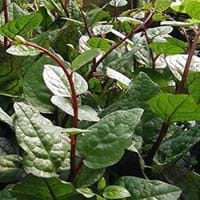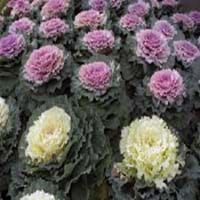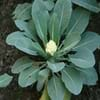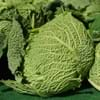Life Span
Perennial
Annual
Origin
Southeastern Asia, India
Europe, Mediterranean, Canary Islands, Northern Africa
Types
Basella rubra, L.Basella oleracea, Landw.Basella lucida, L.Basella japonica, Burm.f.Basella cordifolia,
Not Available
Number of Varieties
Not Available
Habitat
gardens
gardens, Tropical regions
USDA Hardiness Zone
Not Available
2-11
Sunset Zone
H1, H2, 3a, 3b, 4, 5, 6, 7, 8, 9, 10, 11, 12, 13, 14, 15, 16, 17, 18, 19, 20, 21, 22, 23, 24
A1, A2, A3, H1, H2, 1a, 1b, 2a, 2b, 3a, 3b, 4, 5, 6, 7, 8, 9, 10, 11, 12, 13, 14, 15, 16, 17, 18, 19, 20, 21, 22, 23, 24
Habit
Vining/Climbing
Rosette/Stemless
Minimum Width
Not Available
Flower Color
White, Pink, Light Pink
Yellow
Flower Color Modifier
Bicolor
Bicolor
Fruit Color
Purple, Black
Brown
Leaf Color in Spring
Green, Light Green
Dark Green
Leaf Color in Summer
Green, Dark Green
Light Green, Blue Green
Leaf Color in Fall
Green, Dark Green
Light Green, Blue Green, Pink
Leaf Color in Winter
Green, Dark Green
Light Green, Blue Green, Gray Green, Pink
Plant Season
Spring, Summer, Fall, Winter
Spring, Fall, Winter
Sunlight
Full Sun, Partial Sun
Full Sun, Partial Sun
Type of Soil
Clay, Loam
Loam, Sand
The pH of Soil
Neutral
Neutral, Alkaline
Soil Drainage
Well drained
Well drained
Bloom Time
Indeterminate
Spring, Late Spring, Early Summer
Tolerances
Drought
Drought
Where to Plant?
Ground, Pot
Ground
How to Plant?
Seedlings
Seedlings
Plant Maintenance
Medium
Medium
Watering Requirements
Keep ground moist, Requires watering in the growing season, Water Deeply, Water less during winter
Keep the ground moist but not water-logged, Water occasionally, Water twice a day in the initial period
In Summer
Lots of watering
Lots of watering
In Spring
Moderate
Moderate
In Winter
Average Water
Average Water
Soil pH
Neutral
Neutral, Alkaline
Soil Type
Clay, Loam
Loam, Sand
Soil Drainage Capacity
Well drained
Well drained
Sun Exposure
Full Sun, Partial Sun
Full Sun, Partial Sun
Pruning
Remove dead leaves, Remove dead or diseased plant parts, Requires very little pruning
Remove damaged leaves, Remove dead branches, Remove dead leaves
Fertilizers
All-Purpose Liquid Fertilizer
All-Purpose Liquid Fertilizer
Pests and Diseases
Insects, Mites
Red blotch
Plant Tolerance
Drought
Drought
Flower Petal Number
Single
Single
Edible Fruit
Not Available
No
Foliage Texture
Medium
Bold
Foliage Sheen
Glossy
Matte
Attracts
Not Available
Bees
Allergy
no allergic reactions
Skin irritation
Aesthetic Uses
Not Used For Aesthetic Purpose
Showy Purposes
Beauty Benefits
Not Available
Not Available
Environmental Uses
Air purification
Air purification
Medicinal Uses
Astringent
Not Available
Part of Plant Used
Fruits, Leaves
Whole plant
Other Uses
Culinary use, Used As Food
Used as Ornamental plant
Used As Indoor Plant
No
No
Used As Outdoor Plant
Yes
Yes
Garden Design
Container, Edible, Groundcover, Herb / Vegetable, Tropical, Vine
Bedding Plant, Container, Edging, Edible, Herb / Vegetable, Mixed Border
Botanical Name
BASELLA alba
BRASSICA oleracea 'Chidori Pink'( Acephala Group, CHIDORI SERIES)
Common Name
Ceylon Spinach, Indian Spinach, Malabar Spinach
Chidori Pink Ornamental Kale, Ornamental Kale
In Hindi
भारतीय पालक
सजावटी काले
In German
Indian Spinat
Ornamental Kale
In French
épinards indienne
ornement Kale
In Spanish
espinaca india
Ornamental Kale
In Greek
Ινδικό Σπανάκι
καλλωπιστικά Καλέ
In Portuguese
espinafre indiano
ornamental Kale
In Polish
Indyjski szpinak
ozdobny
In Latin
Spinach Indian
decentius
Phylum
Not Available
Magnoliophyta
Class
Not Available
Magnoliopsida
Order
Caryophyllales
Brassicales
Family
Basellaceae
Brassicaceae
Clade
Angiosperms, Core eudicots, Eudicots
Angiosperms, Eudicots, Rosids
Tribe
Not Available
Not Available
Subfamily
Not Available
Not Available
Number of Species
Not Available
Importance of Indian Spinach and Ornamental Kale
Want to have the most appropriate plant for your garden? You might want to know the importance of Indian Spinach and Ornamental Kale. Basically, these two plants vary in many aspects. Compare Indian Spinach and Ornamental Kale as they differ in many characteristics such as their life, care, benefits, facts, etc. Every gardener must at least have the slightest clue about the plants he wants to plant in his garden. Compare their benefits, which differ in many ways like facts and uses. The medicinal use of Indian Spinach is Astringent whereas of Ornamental Kale is Not Available. Indian Spinach has beauty benefits as follows: Not Available while Ornamental Kale has beauty benefits as follows: Not Available.
Compare Facts of Indian Spinach vs Ornamental Kale
How to choose the best garden plant for your garden depending upon its facts? Here garden plant comparison will help you to solve this query. Compare the facts of Indian Spinach vs Ornamental Kale and know which one to choose. As garden plants have benefits and other uses, allergy is also a major drawback of plants for some people. Allergic reactions of Indian Spinach are no allergic reactions whereas of Ornamental Kale have Skin irritation respectively. Having a fruit bearing plant in your garden can be a plus point of your garden. Indian Spinach has showy fruits and Ornamental Kale has no showy fruits. Also Indian Spinach is not flowering and Ornamental Kale is not flowering . You can compare Indian Spinach and Ornamental Kale facts and facts of other plants too.





